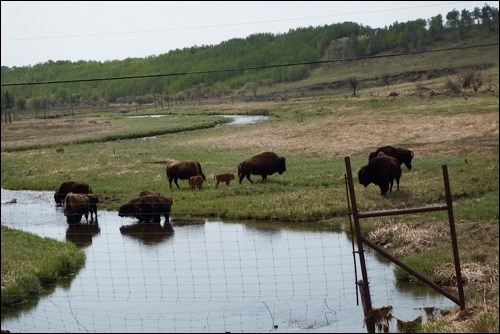It has been confirmed that anthrax has been found in bison northwest of North Battleford.
Saskatchewan Agriculture reports that anthrax is confirmed by laboratory results July 8 as the cause of death in two bison. It is also suspected as the cause of seven other deaths.
According to Sask. Agriculture, anthrax is caused by Bacillus anthracis, a bacteria that can survive in spore form in soil for decades.
Changes in soil moisture from flooding and drying can lead to a build up of these spores on pastures, concentrating in sloughs and potholes, according to the ministry. The risk of animal exposure to anthrax increases in drier years, as these areas dry up and the spores become accessible. They also surface when the ground is excavated or if there is excessive run-off.
Livestock can be infected when they eat forage contaminated with spores. Highly susceptible are bison, cattle, sheep and goats. Horses can also be infected. Swine, birds and carnivores are more resistant to infection. However, farm dogs and cats should be kept from carcasses.
Usually affected animals are found dead without any signs of illness.
The ministry is reminding producers that anthrax is preventable by vaccination, and producers in regions that experienced outbreaks are encouraged to vaccinate animals each year. If neighbours have anthrax, consider vaccination to protect animals, the ministry states.
Also, carcasses of any animal suspected of anthrax should not be moved or disturbed, and should be protected from scavengers (coyotes, ravens) to prevent the spores from spreading.
If anthrax is suspected, contact a local veterinarian immediately for diagnosis. All tests must be confirmed by lab diagnosis and all positive results must be immediately reported to the Chief Veterinary Officer.
The ministry also advises producers to use caution when handling potentially infected animals or carcasses. While animal cases pose minimal risk to humans, people can get infected through direct contact with sick animals or carcasses. Anyone exposed to an infected animal, is adbised to contact a local health authority or physician for assistance.
More can be found at www.agriculture.gov.sk.ca/anthraxresponse




